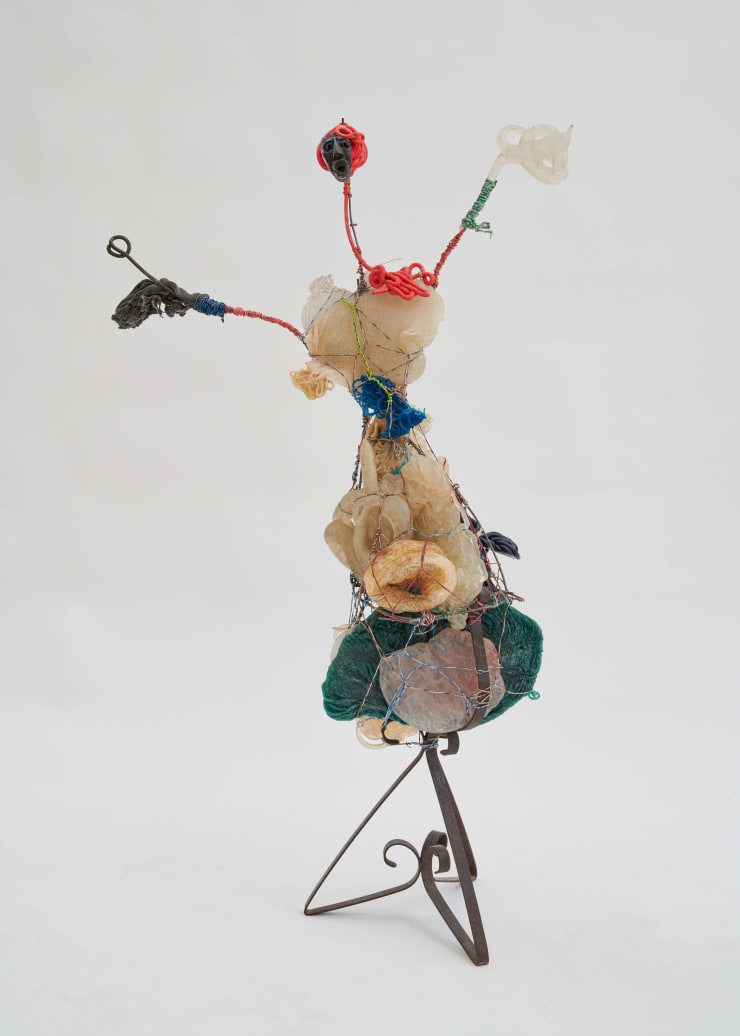Teresa Tolliver
Sebastian Gladstone is pleased to present a solo exhibition of assemblage works by the South Central based artist Teresa Tolliver (b. 1945). The exhibition will open on Saturday, January 8, with an opening reception from 6-9pm, and run through Saturday, February 12. Tolliver is an assemblage artist who uses found materials in a process she calls “creative recycling” to build sculptural representations of her personal experiences, identity, and philosophy of living.
Tolliver’s doll works are part of a project the artist has been working on since the 1980’s exploring her experience as a black woman living in America. Within blackness and femininity the doll is a highly loaded subject with important historical lineages including the groundbreaking Mamie Phipps Clark study made prominent in the Brown v. Board of Education court case, which used dolls to demonstrate the effects of segregation on black children’s self image. The dolls are made with repurposed materials such as yarn, thread, cotton, and stuffed animals. Obviously handmade, the forms replicate the body but stray with their wiry limbs, hips askew, and unbalanced proportions. Texturally the dolls are complex and satisfying, with rough fabric leading to smooth buttons ending somewhere in between on a plant or feather. As the form grows with scale the complexities of the figure expand with small nuances added into the anatomy of the dolls.
Tolliver’s drive to continually be creating new work demands inexpensive and accessible methods and materials, and results in her unique process of appropriating craft for fine art practice. The dolls range in size and shape from small hand-held figures to large-scale pieces that span nearly floor to ceiling. Through a diverse range of materials, Tolliver develops a process of building that makes these works seem both familiar in form yet wholly new and unknown in their delivery and makeup.
Tolliver’s free-standing sculptures continue this tradition into an even more abstract plane where the figure is still present, yet the visual language expands beyond figuation into works highly influenced by the Watts Renaissance of the 1960’s. Through a repurposing of industrial materials such as melted plastics, wiring, and steel beams, Tolliver creates forms that jut skyward, left and right–defying gravity. The influence of Rodia’s towers is undeniable in these vertical structures as they pile upward, seemingly ready to break apart at any juncture. These works continue where the dolls left off, extending into complex sculptures without clear beginnings or ends. Influenced by Tolliver’s personal narrative, all “parts of her,” the assemblages here enter an interior space of the mind, almost a junkyard of thoughts, memories, and feelings.









